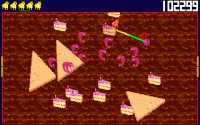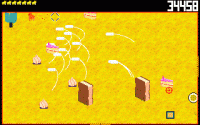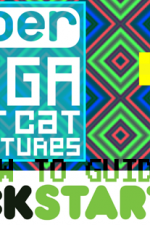// PBarwick – Kickstarter Budgets
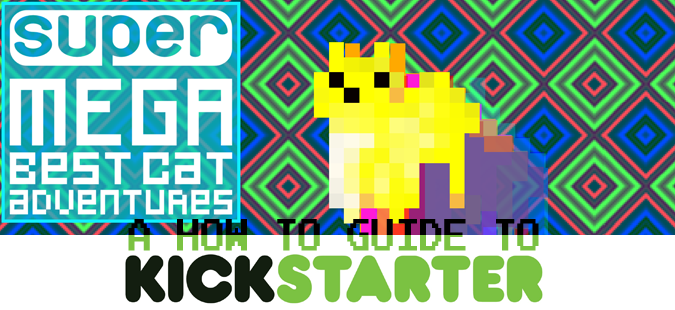
How to write a Kickstarter budget
This week I’m going to go into some detail on my plans for Kickstarter. From what I’ve read, it’s an inexact science but in this update I’m focusing on three things:
- Proposed overall target goal
- Reward tiers breakdown
- Budget detail and analysis
This is a first draft, and as such I’m expecting things to change. I’d love feedback from anyone, if been through Kickstarter or not, as I’m sure everyone will have a strong opinion on what they think is a good approach. As it is, I’ve apportioned my budget to the areas that I’m going to use it, and then talk about how I came to these preliminary decisions.
Section one: The goal
I’ve set my overall goal to be around £10,000. This takes into account 5 areas of predicted expenditure, the given “10% charge” of using Kickstarter, and 5% of funds apportioned to a definite “backup” pot. The distribution can be seen below.
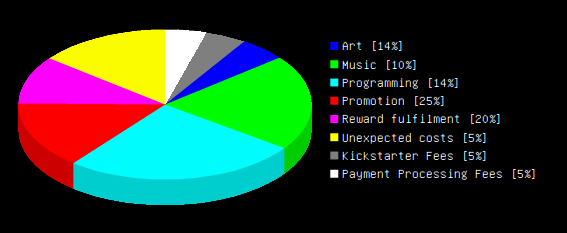
[I]What the Kickstarter money will go towards. click 4 bigger
Art + Programming: Both of these areas of the project are going to be done by me, so essentially this part of the budget is to fund a portion my own dedicated time to work on the project. With the rate of progress I have on this project at the moment, it will be a very long time before I can consider the project to be complete. The 28% of funding received towards these two areas will directly contribute to paying me a living wage to work on the game around my current job. This arrangement is yet to be decided (or formally discussed), but could take the form of 1 day off from my day job for X weeks, or a block of time off in one go to dedicate to the project. Without this funding, progress on the project will be much slower, and I will likely have to sacrifice content and scope to be able to complete the project. It should go without saying (but I’m going to state it anyway) that I’m still intending to work ‘out-of-hours’ on the game as much as I am now, which is to say, for a reasonable amount of unpaid hours per week.
Music + Sound effects: As you can hear in my trailer, I’ve found a great artist who agreed to be part of the project – and if the Kickstarter is successful then I will commission him to provide more tracks for the game. I recognize that my sound budget at the moment is quite low – despite my opinion that sound is massively important part of the overall experience to the player. Because of this, it’s one of the first places that I’m considering either re-allocating ‘leftover’ funds or anything that I make above and beyond the original goal.
Promotion: I’d love to take the game to some small indie gaming expos, or perhaps some slightly-bigger-than-small events. I’ve put a loose 25% against this. Choosing the right value in this area is a hard balance – I think this has the benefit of potentially making the eventual launch of the game more successful, but as far as the backers are concerned could be considered an unnecessary use of funds that could be put directly towards active development of more content. I think 25% is a fair number, hopefully it’s not considered too high, but it recognises to me the importance of that side of game development. After all, if the game does well enough at launch it could allow me to extend the content for the original backers to enjoy. Very interested to hear about other people’s views in this area – I think strongly this should be recognised as a weighty and expensive part of game dev, but what do you think the general public think? I’m wondering whether being so open about it is ‘acceptable’ yet.
Reward fulfilment: I’ve stated this as 20%, but based on my preliminary research, this is quite a large overstatement of my expected costs. You can see the breakdown of this further in this post. I’ve put the figure as 20% (over an estimation of approx 12%), to take into account anything I’ve not considered, or unexpected problems in this area.
Section two: The rewards!
The below image is a snapshot of my current draft reward scheme. Things might change, and I’d be really interested to hear if other people who have contributed to a Kickstarter, or ran their own, to see if they seem reasonable.

Kickstarter reward tiers! link 2 make readable
Hopefully these tiers have a both an enticing smooth scale and fairly priced rewards – bearing in mind that the rewards can’t be sold at cost price in order for the game to be funded. I’m tentative about the idea of granting beta access, but I can see it’s the best way to earn extra funding seeing as there’s no physical cost to doing so. Having a beta means that I have to get the game to a public-facing state earlier in development, which could be considered a setback in terms of forward momentum, also can be considered a good point to consolidate and reflect on the project at around the 75% mark. I’m nervous about doing one, but I think it’s a worthwhile effort. Whenever I look at other Kickstarter projects, I love seeing rewards that have a personal and handmade touch. I think that people really value one-off, special gifts, that only they can get – as a special thank you for helping me realize my dream project. This is why one of my lower tier rewards will be a hand-drawn postcard featuring an imagined scene from the game. Each one will be a different drawing, and signed, so I think it’s a great reward!
The higher tiers include some more traditional rewards: posters, t-shirts, and being able to contribute to designs of mobs or mini-bosses or bosses! Contributing to the design of the game in such a way is a little compromise as originally I thought that I would exclusively want to design everything in the game myself – but I think if others are passionate about my project too then it’s a great chance for a collaborative opportunity, and what’s more really boosts the likelihood of the success of the Kickstarter! The last reward I’m currently considering is a high quality numbered screenprint, of art quality. I think that would be a fun reward to design and make, but I’m currently slightly hesitant as I’ve not brainstormed any designs yet.
For the pricing and cost/benefit distribution of the different tiers, I researched other successful Kickstarters to see two things; firstly an idea of what represents a good, gradual pricing distribution, and secondly to help to estimate how much revenue each tier might generate. The table below shows my current cost estimations versus what, as a rough estimate, the number of units that I could ship of each item.

Kickstarter budget analysis click here 2 read
The estimated revenue generation from sale of the physical items is actually relatively low – I was surprised to see my cost/profit mark-up dropping to below 50% on some items (including postage). That said, a 50% mark-up is good, it seems perhaps a large margin on these items, but at the end of the day I’m aiming to fund production of a video game, not just sell t-shirts and posters.
You might notice that in my budget, I’ve allocated 20% of the funding to go towards reward fulfillment, yet in this table, based on analyzing other Kickstarters of a similar size, I’ve estimated the actual cost of fulfillment to be 11.5 of the total raised funds. I figure that almost doubling the funds allocated to this aspect of the project is the safest bet, as it gives a little money towards prototypes and also the possibility of unexpectedly higher numbers of pledges at those tiers. Perversely, whilst having a lot of pledges at these middle tiers would boost me towards the target goal faster (which is the point), it comes at a higher price to the project financially, as these cost more to produce. If everyone that backed the project went for just the beta version of the game (£15.00), then all of that funding can go directly into making the game even better!
Here is where things get kind of interesting – if I was to remove all the higher tier goals and run a Kickstarter that didn’t provide any reward tiers higher than the £15 tier (beta access to the game), then the table could look like the below – assuming everyone that was interested in the £15 and up tier just settled for that top tier instead.

No physical rewards more numbers click here
What this ‘shows’, is that with that big assumption, I could reduce my goal by £2,000 and reduce my total number of pledges by ~70 (about 10%). Would this make my target easier to reach? Maybe. Maybe not. I think there are obvious fallacies with that proposal. Firstly, the psychology of investment; I don’t think that just because I chop off the higher tiers automatically those investors would settle for the next highest one. Secondly, also psychologically, having those higher tiers makes the lower tiers seem less of an outlay for people. Hey – if presented with two options to help a project I like and times are tight, maybe I’d chip in for the lower of the two, whereas without the choice I may just be questioning backing at all… This is all getting complicated. In any case, I think that the spread of pledges would likely look more like this:

A more sensible distribution last table thank god
Which just goes to show that actually I might need [b]more[/b] backers this way! And as a small lone voice in a crowded market – that sounds a lot harder. So the conclusion I’ve come to is that whilst it might inflate my goal, going to the effort of designing, producing, shipping these bonus rewards for my backers is totally worth it for two reasons:
- It means I need less backers
- I can give people awesome things to say thanks!
Really interested to see if this kind of breakdown is useful to people planning their own Kickstarters – or if anyone thinks I’m way off the mark! Hopefully sharing this kind of information is a benefit to the community, and does raise awareness of the costs and risks involved.
http://supermegabestcatadventures.com/
